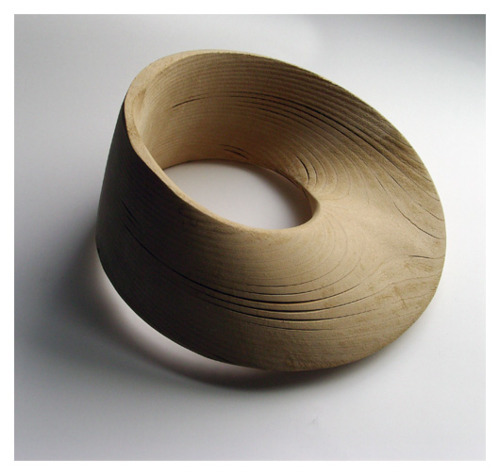
To see the “floor” click here.
I just finished reading Mathematics and the Roots of Postmodern Thought (Oxford University Press, New York, 2001) by Vladimir Tasic. Why did I read such a book? I am currently researching the issue of how and why Georg Cantor overcame the classical Western prohibition against treating infinity as an object of mathematical thought. This book seemed like it might shed some light on the issue, and I think it did.
Table of Contents
Part 1 : Structuralism, Functionalism, Post-structuralism & Hinduism
Part 2 : The Graspable and the Ungraspable
Part 3 : A Toy Model Of Epistemology
Classically, in Western thinking, infinity was considered “off limits” in mathematics. But Cantor went ahead and formulated set theory and his theory of transfinite numbers, and this was extremely controversial in the mathematical world. It had massive ramifications, ultimately leading to Gödel’s Incompleteness theorems, to Turning’ work in computer theory, and to a general split in the mathematical community that can readily be seen today in the distinction between mathematical departments and computer science departments, according to Claes Johnson, whose blog, The World As Computation, I follow.
The vague and undeveloped insight occurred to me that there must be some link between Cantor’s breaking of the prohibition of infinity in mathematics and the rise of post-modernism in the Western world. So, after a little Googling, I found Tasic’s book on Amazon. Interestingly, the mathematician Gregory Chaitin wrote an online review, so that was enough to push me into getting Tasic’s book.
Very Brief Review of Mathematics and the Roots of Postmodern Thought
Unfortunately, Tasic’s book is written in the style that philosopher’s tend to use, although not as bad as some instances I have read lately. By this I mean stuff is simply not presented as straight-forwardly as I am used to reading in science type books. But in spite of this, I got some good insights from the book.
Tasic reviews the rise of structuralism, functionalism, and post-structuralism in Western philosophies and their possible connections with the developments in the foundations of mathematics begun by Cantor. He doesn’t focus directly on Cantor’s use of infinity, but starts mainly with Hilbert’s program to formalize mathematics into an automated machine of meta-mathematics that works mindlessly on strings of symbols to prove whether such strings are true or false.
He traces the roots of all this to Romanticism, a counter-cultural movement of the early 19th century that arose as a reaction to what was perceived at the time as the sterile rationalism of the preceding Enlightenment period, the period in which modern science arose. He starts at Romanticism to bring forth a tension that has been present in Western thinking between the desire to codify all knowledge and experience, on the on hand, and the recognition that there is some aspect of human life that defies such codification, on the other hand. The Romantic Movement sought to exemplify the latter: the ungraspable essence that life appears to contain in its bosom.
Then he describes the pendulum of history going back and forth between these viewpoints. Romanticism breeds structuralism, structuralism breeds functionalism, and the inevitable counter-reaction is found in the post-structural movements that today broadly fall under the rubric of “post-modernism”.
Briefly, the key ideas are this. Romanticism sought to bring to the fore what Nietzsche would later call the “Dionysian spirit”: the uncontrollable, unknowable, ever‑elusive essence that is life itself. However, chaos is always unsatisfying to those who need to grab and hold on to life. The problems of classical philosophy, particularly as codified by Kant, led to the question: when we attribute meaning to the world, where does it come from? This is, after all, the whole idea of codifying our knowledge: to understand the meaning of the world and our existence in it. Further, it is not just the idea of merely understanding it, but understanding it with an inevitable certainty which no one can deny.
To answer the question of where meaning comes from, structuralism brought forth the idea that a thing can only be known within the structure, or context, of which it is a part. There was particular focus on language at this stage, and the issue: what is the meaning of a word? Structuralism indicated a word did not have intrinsic meaning, but depended on its context, on the entire structure in which it was embedded. Yet structuralism at least gave a nod to the ineffable essence that Romanticism exemplified.
Functionalism arose out of structuralism and abandoned the hat tipping to this ineffable, ungraspable chaotic element of life. It posited that meaning came only from its context. The syntactic context was the meaning of the symbol. It is here that Tasic draws the interesting parallel to what happened in foundations of math by discussing how similar logic in math led to the downfall of Hilbert’s program to codify all mathematics in one unified “meta-mathematical” system.
The idea of defining a single object in terms of the whole to which it belongs was a characteristic of Cantor’s set theory. When the sets were finite, it was not so much a problem. But when the sets were infinite, it led to paradoxes. For example, Russell identified the paradox of the “set of all sets not containing themselves.” This set contains itself only if it does not contain itself. This is clearly a self-contradictory notion, which is a no-no in mathematics. This problem was ultimately resolved when Gödel showed that such a system cannot prove all truths, and it led to modifications of set theory as well via the tailoring of axioms (“axiomatics“) specifically to avoid such problems.
Functionalism ran into the same wall eventually. If, say, a given word only has meaning in terms of the whole to which it belongs, then this implies that we can know beforehand the whole system. But this begs the question: how do we know the whole system? What is its meaning? Tasic uses Poincare’s critique of impredicative definitions in math, where Poincare showed that such thinking is just circular thinking in disguise.
It was new to me to learn of the impact of functionalist thinking in diverse fields like language studies, philosophy, and even in mass media. It was a very influential idea through the mid 20th century.
But inevitably, critiques arose of this viewpoint that pointed out the paradoxes of functionalism, analogous to what had happened in foundations of mathematics up to the 1930s, and this was the “post-structuralism” of people like Derrida, Foucault and other names associated with “post-modernism”. These post-structural critiques are both oblique and diverse, but as Tasic suggests, the parallels with how similar problems were resolved in math helps us understand the post-structural critiques.
Overall, the book is useful for pointing out the parallels between what are often treated as very different subjects. He shows common threads and impulses in both 20th century mathematics and Western philosophy that do help to mutually illuminate both.
My Interpretation of the Situation
As I indicated above, Tasic really illustrates an essential tension at the heart of modern Western thought: the need to grasp the ungraspable, to explain the unexplainable. It is on one hand, a desperate need to cage life in some kind of system that has meaning for all eternity. It is, really, an unyielding, tyrannical urge to grasp and control our life and experience. It is an expression of an extreme insecurity in the face of our ever-changing and elusive experience.
This is to be contrasted to the fact that the ungraspable by definition cannot be grasped, and the unexplainable, by definition, cannot be explained. There is some irreducible essence that we encounter that cannot be expressed in terms of words or ideas, and it cannot be tamed by us in any way whatsoever. There is another approach to this, which I like to call “surfing”. One can surf this essence. Instead of trying to grasp and contain it, one rides it, surfs it, and allows it to play through our lives. This is the spirit of Romanticism, the Dionysian thing that Nietzsche talked about.
It is funny to realize that this is what is going on with this so-called “post-modernism”. Tasic does a wonder job of separating the wheat from the chaff, of finding the serious thread of philosophical discourse in what is otherwise a minefield of intellectual quick sand. His intent is to help alleviate the “science wars”. But we can take a different view of the matter.
What struck me though about this history is the following. If we look back to the days of Leibniz and Newton (e.g. late 1600s, early 1700s), this tension expressed itself in a very different form. This ungraspable essence was conceptualized as God, and this was put in contrast to our ability to rationally explain God’s creation. By the time of Kant, 100 years or so later, God was relegated to Kant’s transcendental idealism.
We could postulate God all we wanted, but could never know God rationally. That was Kant’s contribution. God was not disallowed by logic and reason, but neither was he allowed. But the way people took this was: well then, what is the point? If we can’t know God rationally, let’s just abandon the attempt. Further, where was God when the American’s were fighting the British, where was God when the French overthrew their royalty? God might serve as inspiration, but it was men with guns that did the real work.
In short, people started seeing God as dispensable. 100 years after this, Nietzsche finally declared “God is Dead”.
So “God” got replaced with this ungraspable essence of life. The Romanticists expressed this as their Dionysian “anything goes” mentality. The structuralists, and people like Heidegger tried to rationally pinpoint and describe this indescribable essence. Then the quest shifted to trying to understand “meaning”. God got replaced by meaning-in-general, which the formalists thought they had the key to in the idea that the meaning of the object emerges from the total structure. But then God got replaced by the “total structure”. And like the concept of infinity in math, the whole thing blew up. Today, there is just a stupid, secular confusion that we call “post-modernism”; going nowhere real fast, the little hamster on its spinning wheel. Except these hamster wheels are all decorated like a Filipino Jeepney.
The Hindu View
As this is getting rather long, I will close out now with a preview of the next entry. In Hinduism, this ungraspable essence is called Maya. It is a creation of God, whom they call Brahman. All this can be known and experienced through yoga.
